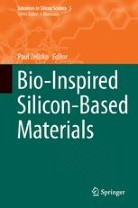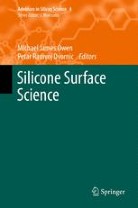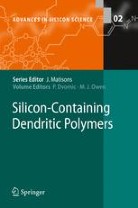
About this book series
This series presents reviews of the present and future trends in silicon science and will benefit those in chemistry, physics, biomedical engineering, and materials science. It is addressed to all scientists at universities and in industry who wish to keep abreast of advances in the topics covered.
Aims & Scopes
Silicon is unique. Once thought to bridge the gap between organic and inorganic chemistry, it has now gone well beyond such simplistic perceptions. It incorporates reactions that have their own ‘organic’ chemistry (e.g. hydrosilylation) and covers solid materials that can be either metallic (e.g. silicon metal), semiconductors (e.g. silicon carbide wafers), ceramic (e.g. porous silicon) or inert particulate fillers (e.g. precipitated silica). Silicon is in the same group of the periodic table as carbon, yet silicon carbide is not another form of diamond or graphite or even amorphous carbon black. It, like most other silicon materials, is unique.
This book series represents the journeys of many eminent silicon scientists into the unique world of silicon materials and molecules. As such, it covers the unique silicon chemistry emerging this century; very similar to the position where organic chemistry stood at the emergence of the last century. It explores how silicon structures convey substance to many silicon materials with a molecular precision that defines silicon science and technology.
- Electronic ISSN
- 1875-3086
- Print ISSN
- 1875-3108
Book titles in this series
-

-
Silicone Surface Science
- Editors:
-
- Michael J. Owen
- Petar R. Dvornic
- Copyright: 2012
Available Renditions
- Hard cover
- Soft cover
- eBook

-
Applications of Polyhedral Oligomeric Silsesquioxanes
- Editors:
-
- Claire Hartmann-Thompson
- Copyright: 2011
Available Renditions
- Hard cover
- Soft cover
- eBook

-
Hydrosilylation
A Comprehensive Review on Recent Advances
- Editors:
-
- Bogdan Marciniec
- Copyright: 2009
Available Renditions
- Hard cover
- Soft cover
- eBook

-
Silicon-Containing Dendritic Polymers
- Editors:
-
- Petar R. Dvornic
- Michael J Owen
- Copyright: 2009
Available Renditions
- Hard cover
- Soft cover
- eBook

Publish with us
Abstracted and indexed in
-
- Chemical Abstracts Service (CAS)
